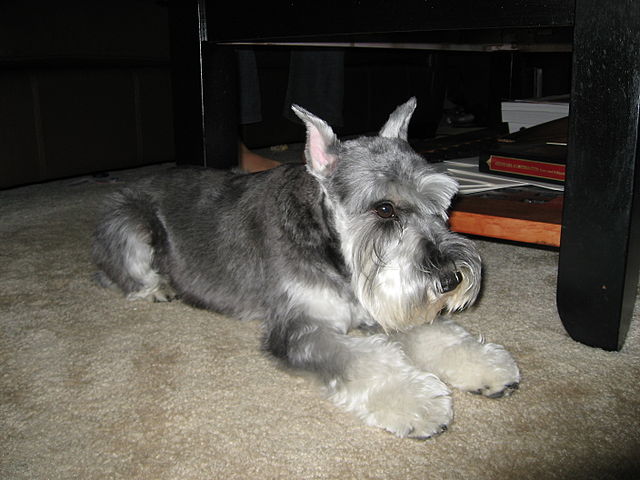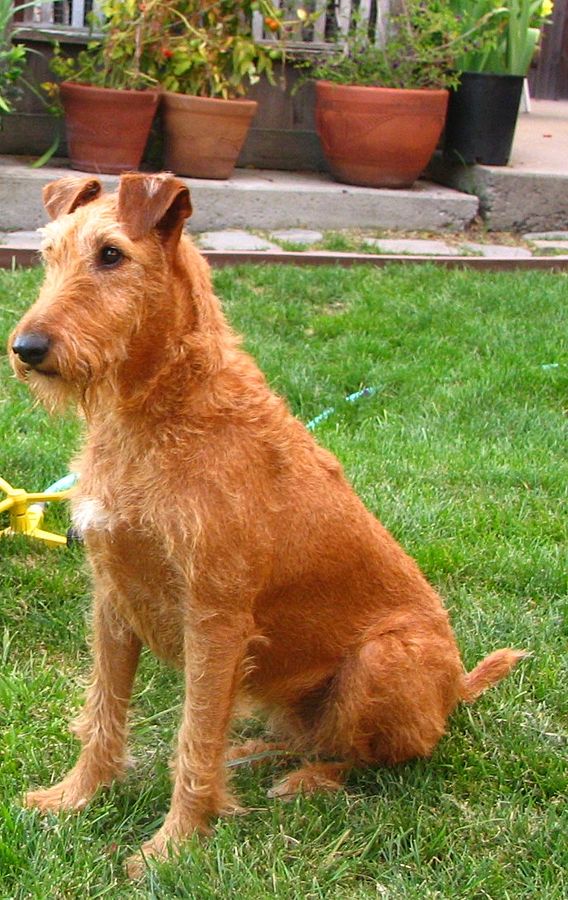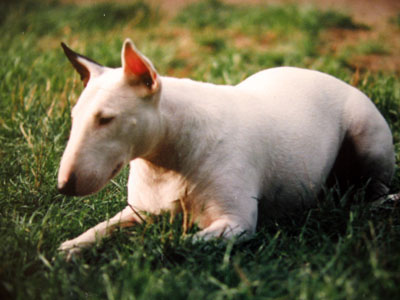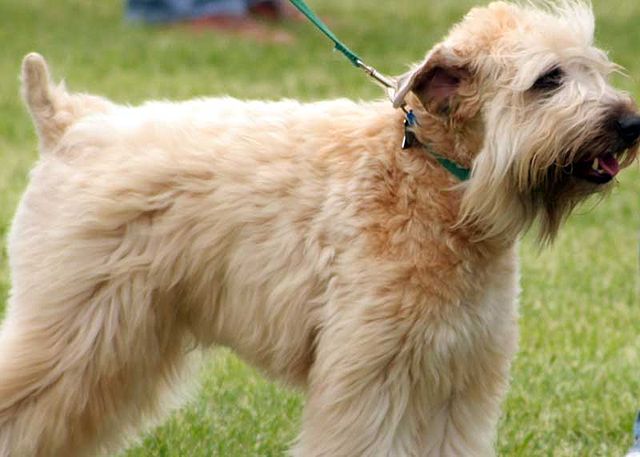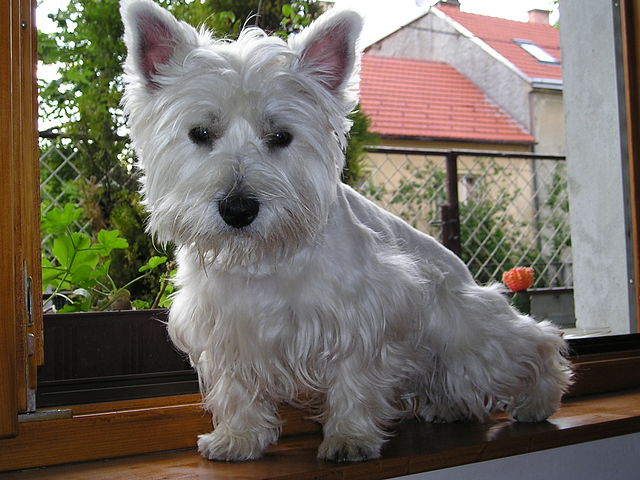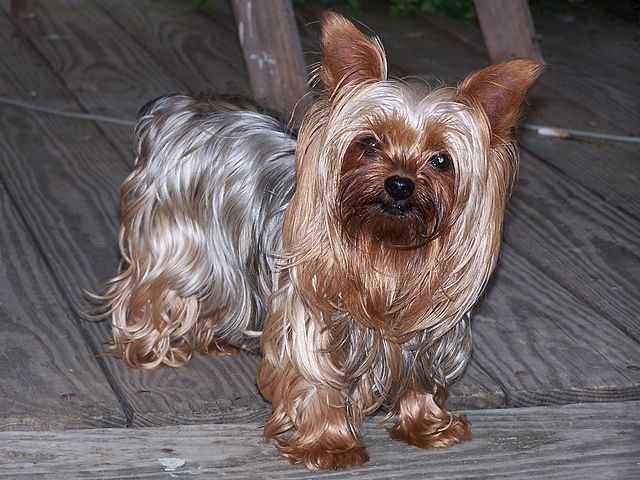The Lakeland Terrier is a hardy little breed with a disposition as wiry as his coat. Athletic and agile, the Lakie (as he is affectionately called) was bred to withstand hard work on the farm, including hunting and killing foxes in their den. Despite his rugged ways, this small terrier is fun-loving and social! As long as he has been socialized well, he loves meeting new people and will not back down from any threat. Like most terriers, he can be cocky and independent but he also possesses a sense of humor and a strong sense of curiosity. Some have so much vigor and general excitement that they will visibly tremble – this is not nervousness, but what is known as “terrier dither”.
Many Lakies take to obedience training very well but do not appreciate being handled roughly. This is a breed that will not hesitate to “fight back” if they are being treated unfairly! On the opposite side of the spectrum, owners or trainers who give them no rules whatsoever will end up with a dog who tries to take over the household (by their nature, these dogs are rarely subordinate). Therefore, a firm yet fair treatment is the only way to go. Many are not particularly food motivated and may need another source of motivation. As many Lakies are good with their noses, they can find great enjoyment in nosework or tracking – this can be one way of getting them interested in working! Remember, also, to keep training sessions short and as non-repetitive as possible with this breed.
Lakeland Terriers are skillful at problem solving and appreciate training games that enrich their minds. If life is too boring for them… they will find their own problems to solve, which might not be something that their owners appreciate… They do best when living with an active person or family who is able to provide plenty of mental and physical stimulation. Despite their small size, many are able to go on very long daily walks – although they are also adaptable. If it is raining and the walk needs to be put off for that day, they will be content to sit inside and watch tv with their owners instead.
Lakelands make great lap dogs and enjoy spending time close to their owners. This makes them an ideal choice for Emotional Support Dogs, provided their needs are met. Many are very gentle when their owners are feeling down (physically or emotionally) and can make great “nurses”. This is also true for children, which they are also generally good around (provided the kids are respectful). They will not tolerate rough treatment from kids and will defend themselves if they need to. Another job that they excel at – is that of watch dog. They will definitely let you know when someone is prowling around the house, although they may also alert to every other little sound they hear while they’re at it.
The coat of the Lakeland Terrier is harsh and double-coated. It needs regular stripping in order for the dog to really resemble the classic “Lakeland look”. Dogs that are not stripped will instead develop a soft, sometimes curly coat which will give them a completely different appearance. Whether stripped or not, this breed is often touted as being hypoallergenic as the hair doesn’t naturally fall out without help, therefore reducing the dander to a minimum. This said, it is highly recommended that an allergic individual should spend some time around the breed to make sure their allergies don’t act up.
Some owners find that housebreaking a Lakeland can take longer than with other breeds. Furthermore, they have small bladders and cannot be expected to “hold it” all day long while their owners are at work. Either installing a dog door or simply making sure that someone comes home to let the dog out in the middle of the day is important. Some people are lucky enough to be able to let their dog come to work with them, and this also works out well since the Lakeland is a great traveler! His small size makes it easy for him to ride in the car as well as to keep out-of-the-way while in public places.
The Lakeland Terrier can be quite territorial, and many consider their territory to be further reaching than the owner’s actual property. Keeping him in a securely fenced yard is very important so that he doesn’t go wandering and defending “his land” from everyone he sees. The breed is also known for being escape artists – so the fence must be dig-proof, jump-proof, squeeze-proof and chew-proof! A wandering Lakie can quickly become the neighborhood bully, so it is the job of the responsible owner to keep this from happening! The breed is not always known for getting along well with other dogs of the same sex, especially if the other dog is a terrier as well. This makes him a nuisance when wandering the neighborhood, and also may make it difficult for owners who enjoy keeping multiple dogs.
These little terriers love water and enjoy playing, swimming, and even just dunking themselves in bodies of water. Supervised trips to the beach can be a fun way to spend time with a Lakeland – preferably with the dog in a life vest (not all of them are the greatest of swimmers). Even buying a kiddie pool and letting the dog play in it can be a rewarding experience for both owner and dog! Playing ball is another favorite activity, although most Lakelands have a blast with just about anything as long as their owner is willing to play it with them. Owners must be able to commit to entertaining the dog for many years to come – Lakelands are a healthy breed that aren’t plagued with a vast number of health problems, and can live long lives.
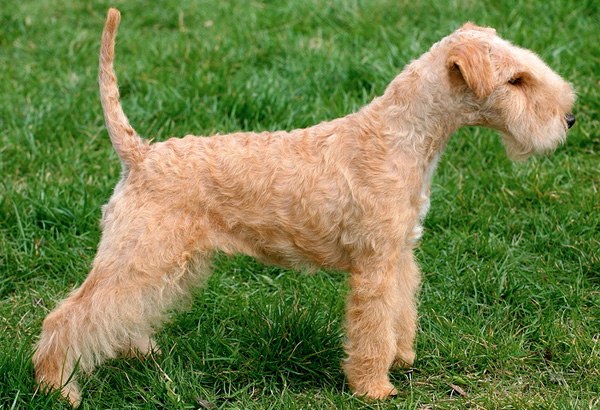
Photo By David_Burton_2011

